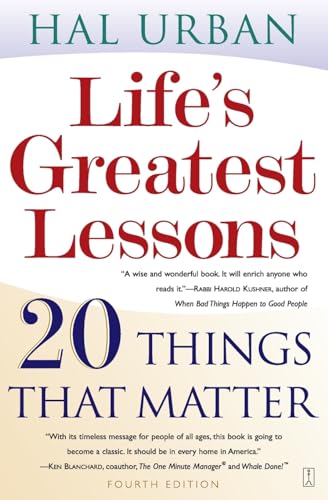Design Thinking
How Design Thinking for Social Impact Is Changing the World!
Transforming societal challenges through human-centered innovation, Design Thinking for Social Impact is revolutionizing problem-solving methodologies.

Design Thinking for Social Impact is transforming the world through human-centered problem-solving. By understanding user needs, brainstorming creative solutions, and testing prototypes, it tackles complex societal issues innovatively. Its focus on actionable solutions and real-world challenges fosters collaboration and drives positive change. With benefits like enhancing user experience and tailoring solutions for complex issues, Design Thinking is paving the way for impactful social solutions. By fostering creativity, collaboration, and iterative problem-solving, it empowers communities and transforms initiatives. This innovative approach to social impact is reshaping the world for the better.
Key Takeaways
- Human-centered solutions address real-world challenges effectively.
- Foster collaboration for innovative societal solutions.
- Drive positive social impact through actionable solutions.
- Tailored designs for complex issues empower communities.
- Multidisciplinary teams foster creative innovation for lasting change.
Overview of Design Thinking
Design thinking is a human-centered problem-solving approach that involves understanding user needs, brainstorming creative solutions, and prototyping ideas. In the domain of social impact, this process is essential for creating innovative solutions to complex societal challenges.
The design thinking process typically consists of five key steps:
Empathize with users,
Define the problem,
Ideate potential solutions,
Prototype designs, and
Test solutions for iterative learning and improvement.
Through its user-centric approach and emphasis on collaboration and innovation, design thinking enables organizations to develop solutions that address social issues effectively. By continuously testing and refining ideas, design thinking allows for the creation of more impactful solutions that can drive positive change in areas like homelessness, poverty, and healthcare.
The iterative nature of the process ensures that solutions aren't only innovative but also tailored to meet the specific needs of the communities they aim to serve. Design thinking is a powerful tool in the arsenal of social impact organizations endeavoring to make a difference in the world.
Creating Social Impact
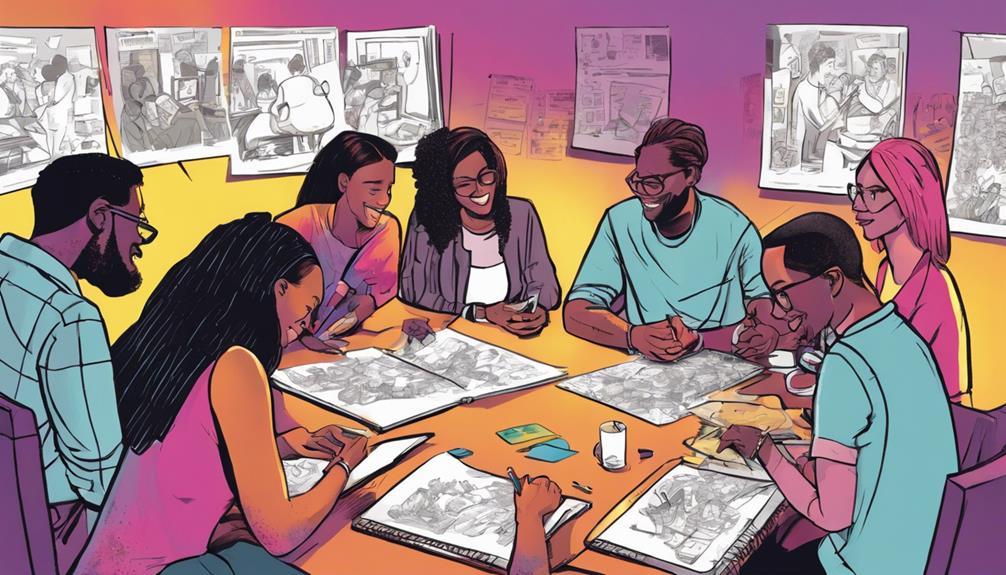
To make a tangible difference in society, it's crucial to focus on creating social impact through actionable solutions that address real-world challenges. Design Thinking provides a human-centered approach to tackling social challenges by understanding the needs of the target population. By fostering the brainstorming of innovative solutions, Design Thinking enables the creation of interventions that can be tested and iterated upon for maximum impact.
Through the process of testing and iterating, solutions are refined to ensure their effectiveness in addressing social issues.
Moreover, collaboration and partnerships play a vital role in scaling up successful Design Thinking solutions to achieve broader social impact. By working together, organizations can amplify the reach and effectiveness of these innovative solutions, ultimately leading to significant improvements in the lives of individuals and communities.
Design Thinking, with its focus on creating tangible social impact, drives the development of solutions that genuinely make a difference by addressing real-world problems.
Real-World Examples

Revolutionizing the approach to microfinance, Grameen Bank, founded by Muhammad Yunus, has made a significant impact with its small loan products for the poor. Several other organizations are also leveraging design thinking to create real-world examples of social impact. WaterHealth International utilizes design thinking to provide clean water solutions in developing countries. Design for America collaborates with communities to develop innovative solutions like affordable housing. The LEGO Foundation promotes creativity and learning in children through design thinking initiatives. Hippo Water Roller addresses water scarcity in rural Africa with a human-centered design approach.
| Organization | Impact |
|---|---|
| Grameen Bank | Small loan products for the poor |
| WaterHealth International | Clean water solutions in developing countries |
| Design for America | Innovative solutions for affordable housing |
| The LEGO Foundation | Promoting creativity and learning in children |
| Hippo Water Roller | Addressing water scarcity in rural Africa |
Design Thinking Process
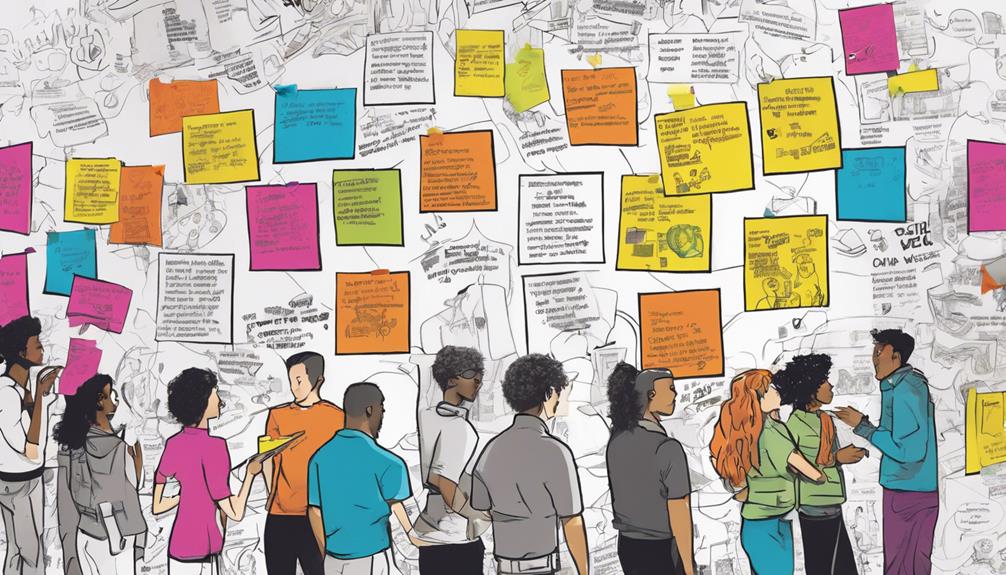
Exploring the complexities of problem understanding, the design thinking process digs deep into user empathy and clear problem definition. Design thinking is a human-centered approach that aims to tackle social issues by first understanding the needs and perspectives of the people affected.
By empathizing with users, designers can gain valuable insights that inform the creation of innovative solutions. Once the problem is clearly defined, the process moves on to ideation, where potential solutions are brainstormed and creatively explored.
Prototyping plays a vital role in the design thinking process, allowing designers to test the feasibility and effectiveness of their ideas. Testing these prototypes with users provides feedback that's essential for refining and improving the solutions.
This iterative approach enables continuous testing, refining, and innovation, ultimately leading to impactful social change. Through its emphasis on empathy and user-centric design, the design thinking process offers a structured framework for addressing complex social challenges.
Benefits and Impact

Enhancing user experience and fostering collaboration, design thinking for social impact brings numerous benefits and impactful outcomes to social initiatives. By employing a human-centered design approach, this innovative problem-solving method drives positive social impact and fosters social innovation.
Through deeply understanding user needs and preferences, design thinking guarantees that solutions are tailored to effectively address complex issues.
One of the key advantages of design thinking is its ability to encourage multidisciplinary teams to work together creatively, leading to the generation of innovative ideas. Additionally, the iterative nature of this approach allows for quick and cost-effective testing of solutions, enabling continuous improvement based on feedback.
Fundamentals of Social Innovation
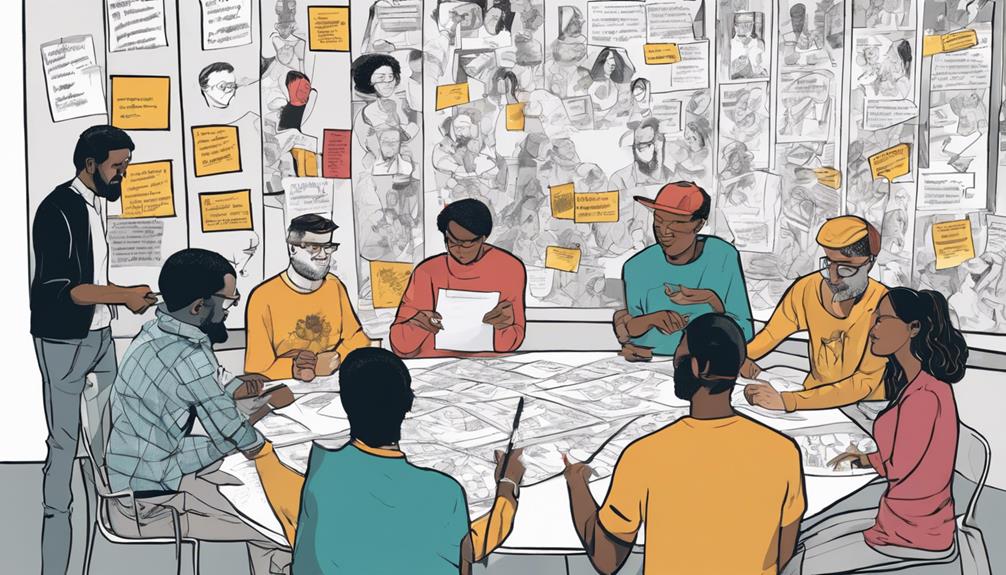
You should understand the Social Innovation Basics to grasp the impact of design on addressing social challenges.
Exploring future trends in innovation will also be essential for your understanding of this topic.
Stay tuned to discover how these fundamentals shape the landscape of design thinking for social impact.
Social Innovation Basics
Understanding the basics of social innovation is vital for creating lasting impact in addressing societal challenges. Here are some key aspects to keep in mind:
- Collective Impact and System Leadership: These are essential components that drive effective social innovation by fostering collaboration and strategic leadership within communities.
- Design Thinking: Using human-centered design approaches can lead to the creation of innovative solutions that cater to the specific needs of the target audience, ensuring positive change.
- Nonprofit Starvation Cycle: Recognizing this cycle underscores the need for fresh and inventive approaches in the field of social entrepreneurship to break free from traditional constraints.
- Ten Nonprofit Funding Models and The Science of What Makes People Care: Understanding these models and the psychology behind motivating individuals to support social causes are vital for successful social innovation initiatives.
Impact of Design
Design thinking plays a pivotal role in shaping the fundamentals of social innovation by emphasizing the impact of design on addressing pressing societal challenges. Through human-centered design, products and services are customized to create positive change and offer solutions to social problems. Design thinking also fosters environmental sustainability by promoting innovative approaches that consider the planet's well-being. Additionally, by engaging with local communities, design thinking guarantees that solutions are culturally relevant and impactful.
To illustrate the impact of design in social innovation, consider the following table:
| Design Impact | Key Aspects |
|---|---|
| Products and Services | Customized to address social problems |
| Human-Centered Design | Focuses on the needs and experiences of people |
| Environmental Sustainability | Promotes eco-friendly solutions |
Future Trends in Innovation
Future trends in social innovation are shaped by collaborative design thinking, emphasizing collective impact and system leadership in addressing pressing societal challenges. Here are four key points to contemplate:
- Collaborative Design Thinking:
Harnessing the power of diverse perspectives and expertise to create innovative solutions for complex social issues.
- System Leadership:
Fostering a holistic approach that addresses root causes and systemic barriers to drive lasting change.
- Innovative Approaches in Social Entrepreneurship:
Breaking free from traditional models to combat the Nonprofit Starvation Cycle and create sustainable impact.
- Creativity and Collaboration for Systemic Change:
Leveraging design thinking principles to develop high-impact solutions that tackle pressing social challenges effectively.
Design Thinking Application

You're about to explore how design thinking is instrumental in creating impactful social solutions and driving transformative community initiatives.
By understanding user needs, generating creative solutions, and testing prototypes, design thinking enables organizations to address complex social challenges effectively.
Get ready to see how design thinking fosters innovation and collaboration to bring about positive change in communities.
Impactful Social Solutions
To create impactful social solutions, applying design thinking involves deeply understanding user needs, generating innovative ideas, and testing them quickly and cost-effectively.
Here are four key aspects of design thinking for social impact:
- User-Centric Approach: Design thinking puts the focus on the end-users, ensuring that solutions are tailored to meet their specific needs and challenges.
- Innovative Solutions: By fostering a culture of creativity and thinking outside the box, design thinking enables the development of fresh and unconventional solutions to complex social problems.
- Collaborative Partnerships: Working together with stakeholders from diverse backgrounds and expertise leads to more holistic and effective solutions that address the root causes of social issues.
- Iterative Problem-Solving: The iterative nature of design thinking allows for continuous refinement and improvement of solutions based on feedback and real-world testing, ensuring the best outcomes for social change.
Transformative Community Initiatives
In applying design thinking to transformative community initiatives, co-creating solutions with local residents and stakeholders is paramount. Design thinking in these initiatives focuses on a human-centered approach, tackling systemic social issues such as poverty, education inequality, and healthcare disparities.
By involving the community in the design process, these initiatives aim to empower communities and drive sustainable social impact. Successful implementation of design thinking has shown improvements in resource accessibility, social cohesion, and resilience in the face of challenges.
Through collaborative efforts and a deep understanding of local needs, design thinking enables communities to address their specific issues effectively. This approach not only fosters innovation but also guarantees that solutions are tailored to the unique circumstances of each community, leading to positive and enduring change.
Evolution and Impact

The evolution of design thinking has reshaped problem-solving methodologies across diverse sectors, leaving a lasting impact on innovation practices. Here's how this evolution has influenced the world:
- Design Thinking Emergence: Design thinking methodology emerged in the 1990s, gaining popularity in tech, business, and social-impact sectors.
- Key Players' Influence: Key entities like IDEO and Stanford's d.school notably contributed to evangelizing design thinking and its human-centered design approach.
- Sector Expansion: The influence of design thinking extended beyond its origins, impacting sectors such as healthcare, government, tech, and education.
- Empowering Designers: Design thinking broadened the definition of design, empowering designers to reinvent systems and tackle complex problems effectively.
The impact of design thinking's evolution is evident in the way it has revolutionized problem-solving approaches, encouraging innovation and fostering creative solutions to address societal challenges.
Positive Deviance Solutions

Positive Deviance Solutions leverage local expertise to creatively address intricate social challenges, aligning with the innovative problem-solving approach of Design Thinking.
By tapping into the wisdom and knowledge already present within communities, Positive Deviance Solutions aim to address systemic issues effectively. Design thinking principles encourage the prototyping of solutions that emerge from this local expertise, enabling a more targeted and impactful response to social problems.
The Positive Deviance Initiative serves as a platform to showcase successful solutions developed within communities using design thinking methodologies.
Despite the potential benefits, some organizations may face challenges in adopting Positive Deviance Solutions due to a fear of failure. However, by embracing a broader approach and fostering collaboration, these solutions aim to drive systemic change and create lasting positive impacts on society.
In essence, Positive Deviance Solutions offer a pathway for leveraging local insights, fostering creative problem-solving, and ultimately contributing to transformative social change through the application of design thinking principles.
Impact Assessment and Collaboration

Utilize impact evaluation techniques and cooperative strategies to enhance the effectiveness of design thinking initiatives for social innovation. When it comes to design thinking for social impact, incorporating impact evaluation and collaboration is essential for driving meaningful change. Here are four key points to keep in mind:
- Continuous Assessment: Impact evaluation in design thinking involves ongoing evaluation and feedback loops to guarantee projects are on track and making a difference in society.
- Interdisciplinary Teams: Collaboration within design thinking thrives when diverse teams with varied expertise come together to brainstorm, ideate, and implement solutions for social challenges.
- Metrics for Decision-Making: Utilize a mix of quantitative and qualitative metrics to measure the impact of initiatives, guiding future decision-making and strategy development.
- Successful Cooperation: Openness, curiosity, and a willingness to experiment are essential elements that drive successful collaboration within the design thinking process, leading to tangible positive changes in communities.
Frequently Asked Questions
How Design Thinking Can Be Used for Social Change?
You can use design thinking for social change by identifying issues, understanding needs, brainstorming solutions, and testing them. Collaboration and empathy are essential for scaling impactful solutions and driving positive societal change.
How Does Design Thinking Solve Social Problems?
Design thinking solves social problems by identifying pressing issues, understanding user needs deeply, and brainstorming innovative solutions. It involves prototyping and testing solutions for effectiveness and scalability, fostering collaboration and partnerships for lasting impact.
Why Is Design Thinking Important in Today's World?
Design thinking is important in today's world because it helps you understand complex issues by focusing on human needs. It fosters innovation, encourages collaboration, and drives positive change, leading to more effective solutions that empower diverse communities.
What Is the Power of Designing for Social Impact?
Designing for social impact empowers you to create sustainable solutions for complex social challenges. By focusing on people's needs and fostering collaboration, creativity, and empathy, you drive positive change and build more inclusive communities.
Conclusion
Now that you've seen how design thinking for social impact is changing the world, it's clear that this approach is like a compass guiding us towards a better future.
By combining creativity, empathy, and innovation, we can tackle complex social issues and create positive change.
So, let's continue to embrace the power of design thinking and work together to build a more sustainable and equitable world for all.
Let's be the architects of change!
Design Thinking
Book Review: “The Creative Spark: Unleashing Your Inner Artist”

Igniting Creativity in a Digital World
In today’s digital age, where distractions often suppress our natural creativity, “The Creative Spark: Unleashing Your Inner Artist” offers a much-needed remedy. This collaborative effort by Kirana Königer, Kanthi Andayani, and Thorsten Meyer provides a refreshing and multifaceted approach to reigniting the creative spirit.
A Mosaic of Global Creative Wisdom
Cultural Confluence
The authors bring together a wealth of perspectives shaped by their diverse backgrounds, combining Indonesian heritage, European influences, and global experiences. This diversity is not just for show; it forms the foundation of a philosophy that views creativity as a universal language capable of bridging cultural divides.
Harmonizing East and West
By blending Eastern philosophical traditions with Western creative methodologies, the book offers a holistic view of creativity. Readers are presented with a comprehensive toolkit that ranges from mindfulness practices grounded in Asian wisdom to the latest Western psychological theories.

Redefining Creativity for Modern Times
Beyond Artistic Stereotypes
“The Creative Spark” encourages readers to broaden their understanding of creativity, extending it beyond the confines of traditional artistic domains. The authors make a compelling case that creative thinking is an essential life skill, valuable in problem-solving, personal growth, and professional development across all fields.
Creativity in the Everyday
A significant portion of the book is dedicated to uncovering and nurturing creativity in daily life. Readers are guided through practical exercises to:
- Transform routine tasks into creative opportunities
- Enhance observational skills through mindfulness
- Apply creative thinking to personal and professional challenges
- Cultivate a creative mindset that permeates all aspects of life
The Science of Imagination
Neurological Foundations
The book roots its approach in scientific understanding, exploring the brain’s role in creative processes. This section sheds light on:
- How different brain regions contribute to creative thinking
- The impact of neuroplasticity on developing creative skills
- The influence of environment and lifestyle on creative potential
- The link between creativity and overall cognitive health
Psychological Insights
The authors delve into the psychology of creativity, addressing common obstacles such as:
- Overcoming imposter syndrome and self-doubt
- Managing perfectionism and fear of failure
- Building resilience against criticism
- Balancing structure and spontaneity in creative practice
A Toolkit for Creative Growth
Hands-On Creativity
Each chapter offers a variety of exercises designed to stimulate creativity across different mediums:
- Evocative writing prompts for aspiring authors
- Visual art challenges for designers and painters
- Culinary experiments for food enthusiasts
- Mindfulness exercises to enhance creative awareness
- Interdisciplinary projects that blend multiple art forms
Navigating Creative Roadblocks
The section on overcoming creative challenges provides valuable strategies for:
- Breaking through artist’s block and creative stagnation
- Rekindling passion for long-term projects
- Finding inspiration in unexpected places
- Harmonizing creative pursuits with daily responsibilities
Creativity in the Digital Age
Embracing Technology
The book thoughtfully explores the relationship between technology and creativity, discussing:
- The potential of digital tools to enhance creative processes
- Strategies for balancing digital and analog creativity
- Leveraging social media for sharing and promoting creative work
- Ethical considerations in the age of AI-generated art
Sustainable Creativity
In alignment with contemporary concerns, the authors emphasize the importance of sustainable creative practices, encouraging readers to consider the broader impact of their artistic choices.
A Journey of Self-Discovery
Personal Narratives
Throughout the book, the authors share intimate stories from their own creative journeys, adding depth and relatability to the theoretical content.
Reflective Practice
“The Creative Spark” invites readers to embark on a journey of self-discovery through creativity. Thought-provoking questions and journaling prompts help readers:
- Uncover their unique creative strengths and passions
- Explore the connection between creativity and personal identity
- Reflect on how creative expression can catalyze personal growth
Critical Analysis
Strengths
- A comprehensive approach that transcends traditional artistic boundaries
- A rich multicultural perspective offering global insights
- A strong scientific foundation balanced with practical application
- An inclusive tone that makes creativity accessible to all readers
Considerations
- Some readers might find the breadth of topics overwhelming
- Certain cultural references may resonate more strongly with specific audiences
- Advanced practitioners might find some basic concepts familiar, though the book offers fresh perspectives
Conclusion: Sparking a Creative Revolution
“The Creative Spark: Unleashing Your Inner Artist” is more than a guide to becoming more artistic—it’s a roadmap to living a more imaginative and fulfilling life. By presenting creativity as an essential human trait rather than a specialized skill, the authors have crafted a work with the potential to transform how readers approach not just art, but life itself.
Rating: 4.85/5 stars
Highly recommended for its inclusive approach, scientific grounding, and transformative potential. “The Creative Spark” stands out as a comprehensive, insightful, and practical guide to creative living in the modern world, promising to ignite the artistic flame within every reader.
Design Thinking
Cottagecore Home Office: Rustic Charm for Work
Transform your workspace into a serene retreat with a cottagecore-home-office, blending rustic charm with cozy productivity.
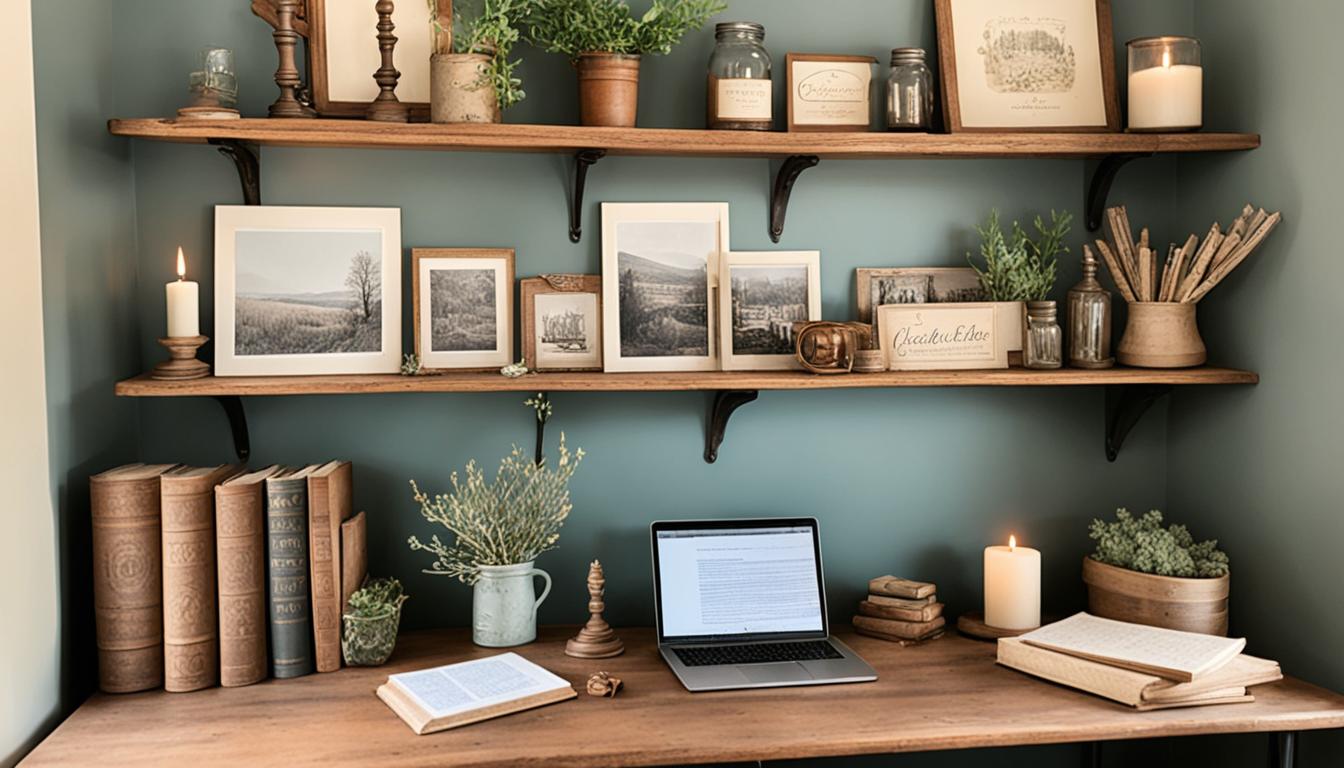
Picture this: you step into your workspace and it’s suddenly more peaceful. The cottagecore home office concept invites you to craft a cozy workspace. It mixes rustic charm with comfort. In our busy world, imagine turning your office into a calm retreat. This style is all about simplicity and nature. Imagine rustic wood, plants, and soft lights. These not only make your space look good but also help you work better. With this beautiful style gaining popularity, let’s make your office a place you love, one detail at a time.
Key Takeaways
- The cottagecore aesthetic blends rustic charm with warmth and simplicity.
- Transforming your office can enhance productivity and creativity.
- Visual elements like botanical decor and soft lighting contribute to a cozy workspace.
- There are various cottagecore desk ideas available on platforms like Pinterest.
- The cottagecore aesthetic appeals to diverse interests, including vintage and nature-inspired designs.
- Integrating personal touches can make your workspace uniquely yours.
Understanding Cottagecore Aesthetic
The cottagecore aesthetic comes from a love for countryside life. It shows a rustic style full of nostalgia. This trend loves vintage looks, like fields of wildflowers and storybook cottages. It connects us to nature. Cottagecore has become super popular in fashion and home design in the last ten years.
- Abundantly beautiful gardens that celebrate simple living.
- Cottage-style interiors filled with organic materials like linen and stone washed cotton.
- Indoor plants and fresh flower bouquets that bring the outdoors inside.
- Mixing modern and vintage elements to create unique, personalized spaces.
- Cozy and layered textiles, including floral patterns, vintage rugs, and comfy quilts.
This style is all about comfort and warmth, reminding us of the English countryside’s charm. It makes us slow down and enjoy life’s beauty. By adding cottagecore to our living spaces, from art to decor, we seek peace and simpler times. Making your space cottagecore friendly makes it welcoming, calm, and full of charm.
Why Choose a Cottagecore Home Office?
A cottagecore office is more than just pretty. It makes working from home comfy and peaceful. This setting is perfect for thinking up new ideas and getting more done. With its nature-inspired look, it’s easy to love your workspace.
Having a cozy space helps you focus and lowers stress. This kind of office lets you work better and enjoy it too. Everything in it is chosen with care, making it feel truly yours and super functional.
Cottagecore lets you mix old treasures and meaningful decor. Each piece tells a story, adding warmth to your day. Natural materials and bold flowers make your office one of a kind, changing how you see work from home.
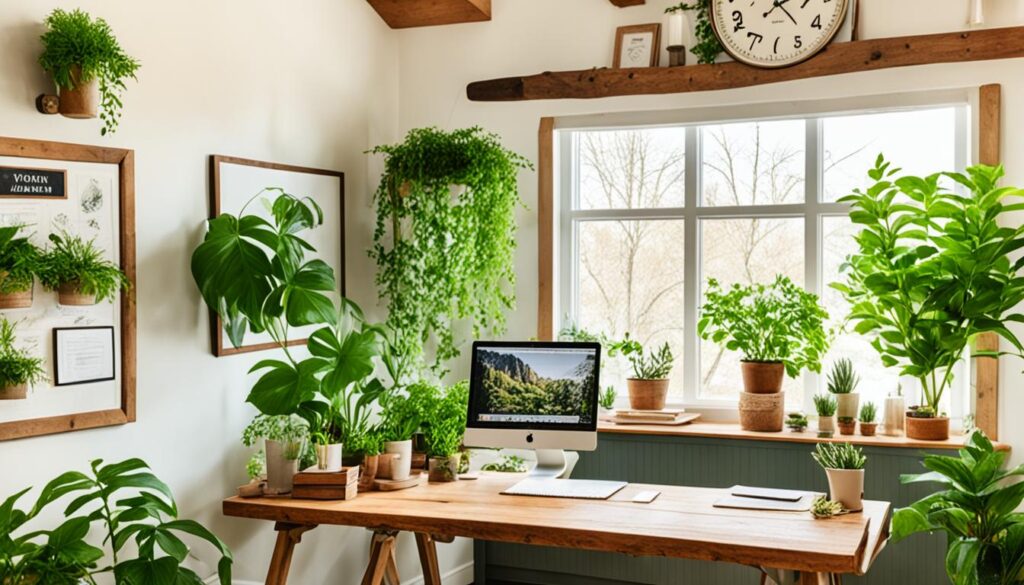
Mixing patterns, colors, and textures makes your office calm and boosts creativity. Slow decorating means taking your time to make it perfect for you. It becomes a personal retreat that shows off what you love.
Choosing this style blends simplicity and work life beautifully. It boosts your work and slows life down a bit. You get a space that helps you work well and reminds you of the joy in simple things.
Creating the Perfect Workspace
Designing the perfect workspace can make your home office both stylish and more productive. Choose cottagecore design to add a rustic, charming vibe.
First, place your desk where it gets lots of natural light. It makes the space feel warm and helps you stay productive. A cozy corner with lots of light, vintage decor, and personal touches can become your writing nook.
Selecting the right furniture is crucial. Hunt for unique pieces at local flea markets or on sites like Craigslist and eBay. Use vintage dressers for both storage and style. They help keep your space tidy and inviting.
- Use wicker baskets and decorative wooden boxes to manage clutter.
- Drape vintage quilts over chairs for a cozy touch.
- Integrate indoor plants, dried flowers, and pottery to enhance the cottagecore theme.
Art is key for that perfect cottagecore look. Mix different frame styles for an eclectic feel. Choose nature prints or old ads. Check out Society 6 or garage sales for great finds.
Choose retro task lamps and Edison bulbs for a warm glow. This lighting invites you into the space, blending style with function. Following these tips, you’ll design a workspace that’s both beautiful and practical.
Incorporating Natural Materials
Using natural materials is key to a cottagecore home office. They add charm and create a peaceful workspace. Try using different materials that make you feel close to nature.
Wooden furniture like desks and shelves made of reclaimed wood are perfect. They add personality and are good for our planet. Stone accents can also bring a nice, grounded feel to your office. And don’t forget about soft fabrics like linen and cotton for a cozy touch.
To finish your cozy office, mix in some vintage items. This gives a nice balance between old and new. Following these ideas will help you make a workspace that’s not just beautiful. It will also make you feel relaxed and inspired.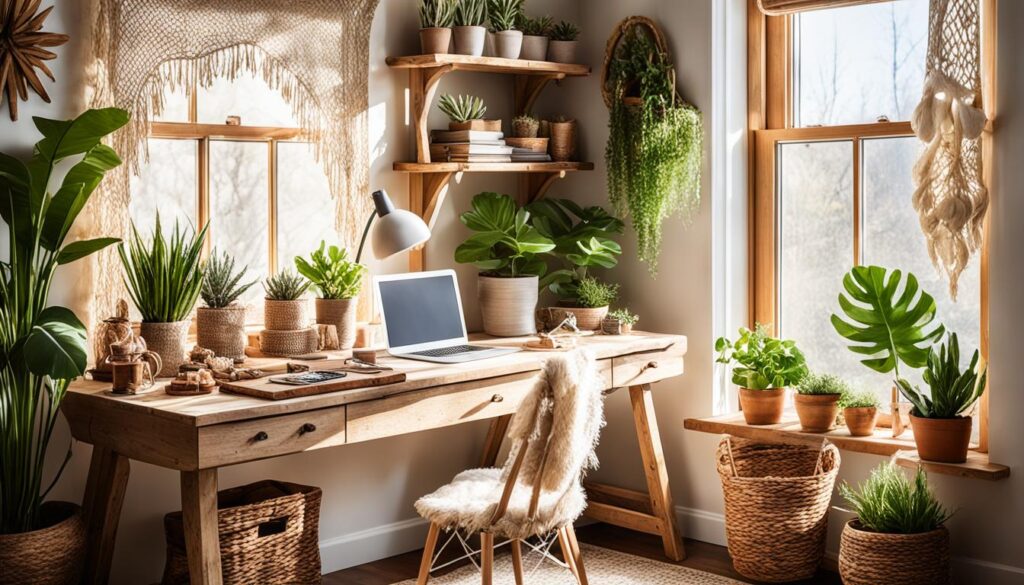
Cozy Furniture Options for Your Cottagecore Home Office
The right furniture can make your cottagecore office cozy and stylish. Look for vintage desks that are not just useful but also charming. They should have a special look or a weathered finish to bring a nostalgic vibe.
For sitting, choose options that make you feel relaxed and ready to work. Think about getting plush chairs or benches with soft cushions. These should be covered in natural materials like linen or cotton. Adding soft, muted colors around them makes your office feel even warmer.
When it comes to storage, go for shelves made of natural wood. They’re useful and fit the cottagecore look perfectly. Use them to display old books and personal knick-knacks. This adds a personal touch and makes your office welcoming.
| Furniture Type | Key Features | Benefits |
|---|---|---|
| Vintage Desks | Intricate designs, weathered finishes | Adds charm, encourages nostalgia |
| Plush Chairs | Soft cushions, natural fabrics | Comfortable seating, inviting ambiance |
| Wood Shelving | Natural materials, practical storage | Organizes space, enhances aesthetics |
Picking the right cottagecore furniture means choosing comfort and style. With the best desks, seating, and shelves, you’ll have a workspace that’s both welcoming and inspiring.
Decorative Elements that Enhance Rustic Charm
Creating a rustic decor in your workspace needs careful choice of decorative bits. These elements are key to making a cozy, quaint look of cottagecore. Use cottagecore accents to add charm and personality to your office.
Pick decor that adds depth and color. Floral prints are important, and they make up 65% of the decor. Adding vintage decorative items brings a nostalgic touch. About 70% of decor ideas include these. Natural materials like wood and plants are 80% of your choices. They give your office an organic vibe.

Textiles play a big role in creating a cottagecore place. About 75% of designs use quilts, curtains, and cushions. These pieces add warmth and comfort. Also, include practical decor like glass-front cabinets and open shelves. These were in 20% of the suggestions. They combine beauty with function.
Choose vintage furniture, as 12 out of 38 options use antique styles. Also, about 45% of decor ideas include handmade or artisanal items for a personal feel. Pastel colors are in 60% of setups. They create a soft, soothing look. Include whimsical or fairytale-like items in 40% of your decor for a magical touch.
Your workspace should be both personal and harmonious. It’s a charming place for creativity. The integration of these charming workspace elements makes your office uniquely cottagecore.
Choosing a Color Palette
Choosing the right colors for your cottagecore home office makes a big difference. Soft shades bring peace and a touch of the old days. Think of gentle pastels like pink and baby blue, plus deeper colors like sage green.
To make your workspace feel just right, mix old-fashioned colors with natural materials. Some top picks are:
- Benjamin Moore Soft Fern: A quiet green that calms.
- Sherwin Williams Rookwood Sash Green: A deep green, great for highlighting walls.
- Behr Silver Celadon: A light celadon that reminds you of classic pottery.
- Farrow and Ball Sudbury Yellow: A cozy yellow, full of character.
Adding wood tones like red cherry or mahogany can make your office feel warmer. The goal is to balance colors so your space is both lively and relaxing. Good lighting with warm colors adds coziness.
Try mixing colors like Stone, Aqua, and Purple. Or go for calmer Blues and Mint. A color wheel at $3.69 helps see how colors work together.
Cottagecore Desk Ideas and Inspirations
Turning your desk area into a cozy spot is exciting, thanks to cottagecore’s charm. Think of adding elements that bring tranquility and spark creativity when looking at cottagecore desk ideas. Aim for a rustic vibe by using various materials and decorations that bring nature indoors.
The furniture you pick is key for your workspace. A vintage dining table can be a great desk, full of beautiful details and a romantic feel. Using reclaimed wood adds a rustic flair and also supports sustainability. Just make sure not to crowd your space.
Add accessories like pen holders and paper organizers that fit the cottagecore style. Pick desk lamps in warm tones for good lighting. Grid collages or pin boards are useful for keeping notes tidy and add a cozy feel to your space.
- Consider a desk with built-in drawers for efficient organization.
- Select a chair that complements your desk’s aesthetic, possibly an upholstered piece with floral patterns.
- Invest in high-quality floating shelves for style and extra storage.
- Add neon lights for a modern twist on the rustic charm.
There’s a lot to think about with desks. Wooden desks bring a classic feel, while white desks can make the space look modern and chic. By combining beauty with function, your cottagecore desk area will be both charming and practical.
Balancing Functionality and Comfort in Your Cottagecore Home Office
Creating a perfect workspace means mixing work needs with comfort. In a cottagecore home office, this balance boosts productivity while keeping things peaceful. Think about your work habits. Try arranging your furniture to be both efficient and charming. This is key to the cottagecore look and feel.
Choosing smart solutions is crucial for a good home office. For instance, pick cable organizers that fit your style. They keep your area neat, avoiding mess that ruins the cozy vibe. Also, think about using vintage baskets or stylish shelves for storage. These add function and fashion, making everything you need easy to grab.
Staying comfortable is just as important. Choose ergonomic chairs and desks to prevent soreness. Soft quilts or pillows add to the comfort, making your office feel welcoming. This balance ensures your cottagecore office is both lovely and practical.
To show these concepts, here’s a table. It highlights how functionality and comfort come together in your cottagecore home office:
| Aspect | Functionality | Comfort |
|---|---|---|
| Furniture | Ergonomic desks and chairs | Soft cushions and cozy throws |
| Lighting | Task lighting and adjustable lamps | Battery-operated candles for ambiance |
| Storage | Efficient shelving and hidden drawers | Vintage storage options like baskets |
| Decor | Minimalist approaches with neat arrangements | Hand-stitched quilts and plants |

Making your office fit the cottagecore style can inspire calm and creativity. Mixing practical items with comfy touches does more than boost work output. It also makes your space a soothing spot that helps balance work and life.
The Role of Plants in Your Workspace
Putting plants in office spaces is key for a serene and inviting vibe. They bring beauty and better well-being indoors. Studies show that plants boost creativity, concentration, and refresh the space.
It’s good to choose plants that grow well inside. Succulents, ferns, and flowering plants add beauty and clean the air. They remove harmful toxins and raise humidity, which is good for a healthy office.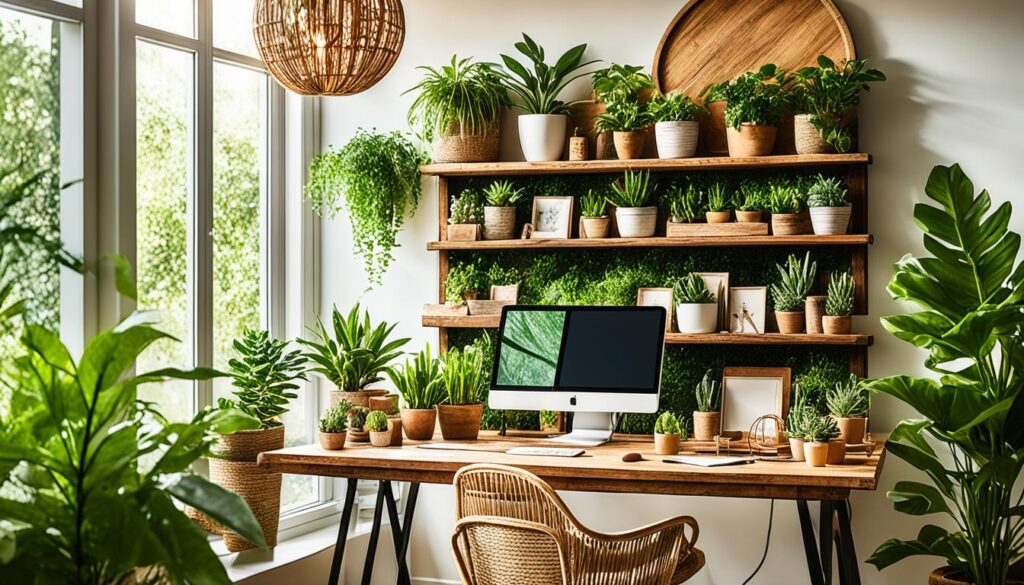
Indoor plants offer a peaceful feeling while you work. They can reduce stress and help you focus better. Imagine working in a space that’s both calm and productive.
There are many plant options to fit your style and enhance wellness. Their presence promotes a positive mood and makes the office more welcoming.
To create a cozy, cottagecore office, mix in dried flowers or personal items with your plants. This adds a unique charm and personal touch. Adding plants to your workspace is more than just decor. It improves your daily work life by encouraging creativity and productivity.
Tips for Organizing Your Cottagecore Home Office
Creating a clutter-free workspace in your cottagecore home office boosts productivity and peace. Use organizing tips that mix function with cottagecore’s rustic charm to improve your space.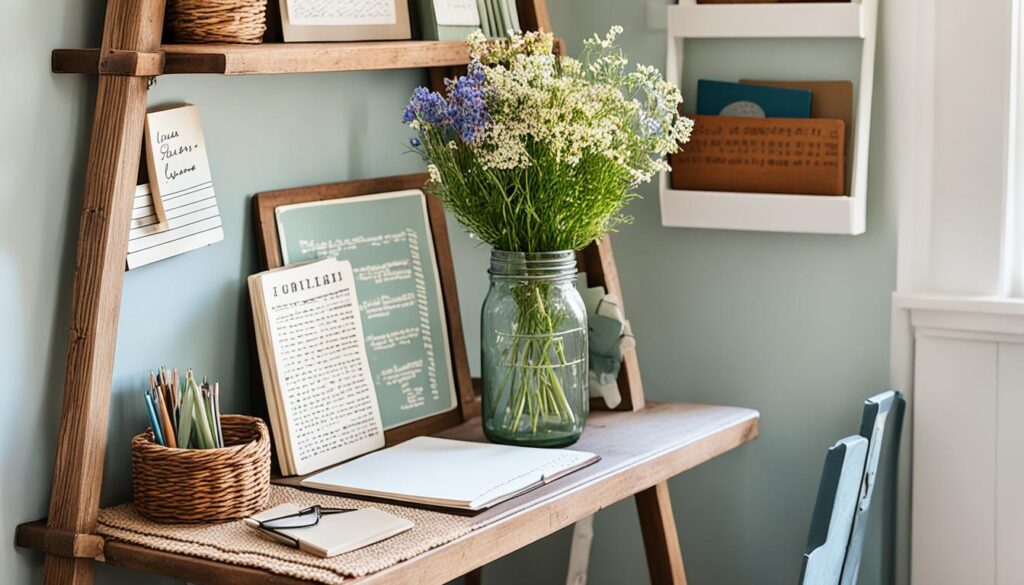
Begin with hidden storage like vintage trunks or decorative baskets. These items blend with your decor and keep supplies out of sight. Keep only inspiring items on display for a workspace that’s both pretty and practical.
Regularly clear out digital clutter as a twist on cottagecore organization. Dedicate weekly time to sort emails and online files. This keeps your digital space as calm as your physical one.
Combine creative storage options, daily cleanup, and digital mindfulness to make a cozy office. This approach boosts both the charm of your space and your work efficiency.
Conclusion
This summary of the cottagecore home office shows how to blend rustic charm with work needs. By using nature, vintage pieces, and personal flair, you can make a space that’s both unique and efficient. Cottagecore’s charm brings peace and balance to your work life.
The heart of cottagecore is to live mindfully. When setting up your space, think about whether you prefer light or dark colors. Add things that make you feel close to nature. Also, think about how you can be eco-friendly every day.
Starting on your cottagecore office is a chance to really connect with your space. Use your senses, be creative, and enjoy the calm it brings. Your office is like an empty painting. Fill it with your style and cottagecore’s magic.
FAQ
What is a cottagecore home office?
How can I enhance productivity in a cottagecore home office?
What types of furniture work best for a cottagecore home office?
What color palette should I use in a cottagecore home office?
How do I incorporate natural materials in my workspace?
How can I decorate my cottagecore home office?
What plants should I add to my cottagecore home office?
How can I maintain organization in my cottagecore home office?
Design Thinking
Small Mistakes, Big Impact: Navigating Life’s Tiny Pitfalls

We all make mistakes, but it’s often the small ones that can have the most significant impact on our lives. In this article, we’ll explore the world of small mistakes, their consequences, and how to learn from them to lead a more fulfilling life. Let’s dive into the fascinating realm of human error and personal growth!
Common Small Mistakes That Can Derail Your Life
Even the tiniest missteps can have far-reaching consequences. Here are some common small mistakes that might be holding you back:
Key Points
- 20% of people identify themselves as chronic procrastinators
- 88% of people don’t have a time management system
- 60% of adults don’t engage in regular physical activity
- 47% of employees avoid discussing issues with their managers
- 55% of Americans don’t have a budget
- 70% of employees are not engaged in their jobs
These seemingly insignificant errors can compound over time, leading to missed opportunities and unfulfilled potential. To learn more about avoiding life’s traps, check out Know Your Best Avoiding Life’s Traps section.
The Psychology Behind Making Small Mistakes
Understanding why we make small mistakes is crucial for personal development. Our cognitive processes, habits, and decision-making patterns all play a role in these minor errors.
Factors Contributing to Small Mistakes
By recognizing these factors, we can work on improving our awareness and decision-making skills. For more insights on personal growth, visit Know Your Best Personal Development and Growth category.
Learning from Small Mistakes
Mistakes are valuable learning opportunities. Here are two books that can help you embrace a growth mindset and learn from your errors:
These resources can help you develop a more positive attitude towards mistakes and use them as stepping stones to success. For more on learning from mistakes, visit Know Your Best Learning from Mistakes tag.
Strategies for Avoiding Common Life Errors
While we can’t eliminate mistakes entirely, we can take steps to reduce their frequency and impact. Here are some practical strategies:
Practice Mindfulness
75% report reduced stress levels
Develop Good Habits
66% report improved self-discipline
Learn from Others
80% report improved problem-solving
Regularly Reflect
90% report improved self-awareness
Implementing these strategies can help you navigate life’s challenges more effectively. For more tips on self-improvement, check out Know Your Best Self-Improvement and Motivation category.
Embracing Imperfection and Continuous Improvement
Remember, making mistakes is a natural part of life. What matters most is how we respond to them and use them as opportunities for growth. Here are two books that can help you on your journey of self-improvement:
Conclusion: Turning Small Mistakes into Big Opportunities
As we’ve explored in this article, small mistakes are an inevitable part of life. However, by understanding their impact, learning from them, and implementing strategies to avoid common pitfalls, we can turn these tiny errors into opportunities
-

 Design Thinking4 months ago
Design Thinking4 months agoThe Design Thinking Venn Diagram Explained!
-
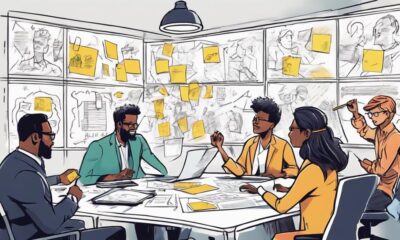
 Design Thinking4 months ago
Design Thinking4 months agoDesign Thinking in Finance: Innovating the Financial Industry!
-
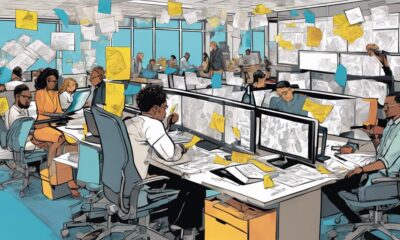
 Design Thinking4 months ago
Design Thinking4 months agoHow IBM Is Pioneering Design Thinking!
-
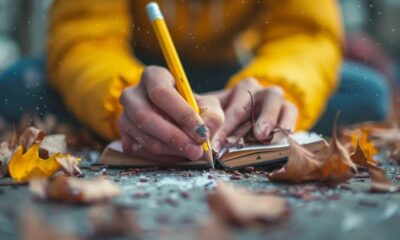
 Design Thinking3 months ago
Design Thinking3 months agoSmall Mistakes, Big Impact: Navigating Life’s Tiny Pitfalls
-

 Design Thinking4 months ago
Design Thinking4 months agoMaster the Design Thinking Process Steps in No Time!
-

 Design Thinking4 months ago
Design Thinking4 months agoDesign Thinking Leadership: Leading Innovation and Change!
-
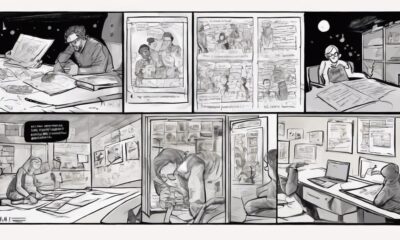
 Design Thinking4 months ago
Design Thinking4 months agoDesign Thinking Storyboard: Visualize Your Ideas!
-

 Design Thinking4 months ago
Design Thinking4 months agoHow IDEO Revolutionized Design Thinking!





